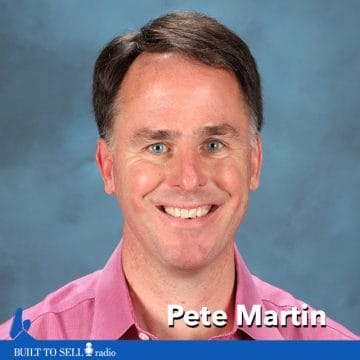About this episode
Pete Martin built EntryPoint Consulting to 34 employees when he sold it to KPMG for a staggering 12 times earnings — without an earn-out.
In an industry that usually trades at low single-digit multiples, most of which is generally tied to a lengthy earn-out, Martin’s exit is an epic achievement. In this episode, you’ll discover:
- Two specific tactics to pull yourself out of the operations of your business.
- How to create an “on-ramp” offering.
- Two things Martin did to convince KPMG to buy EntryPoint without an earn-out.
- Why you should never separate the negotiation of terms from the price.
- How to protect yourself from a competitor posing as an acquirer to steal your employees.
You’ll also get understandable definitions for M&A lingo like:
- Indication of Interest (IOI)
- Downstroke
One of the secrets to Martin’s success was that EntryPoint did not rely on him to sell or deliver their service. If you’re wondering how dependent your company is on you, get your Hub & Spoke score by completing The Value Builder questionnaire.
Check out our article on Study Reveals Companies With Higher Chance Of Receiving 8 Times EBITDA Offer.

About Our Guest
Pete Martin worked in sales, operations, and executive management for over 25 years beginning in sales at IBM, executive management at SAP, and then building six of his own companies. Pete has been personally involved in the sales of over $1 billion dollars of software, services, and technology to global companies including Dow Chemical, Lockheed Martin, Eli Lilly, and Continental General Tire, as well as small to medium-sized businesses.
Pete started, scaled, and sold four out of four previous companies (two remain active including AskMyBoard) including car leasing, systems integration consulting, business process outsourcing, and software distribution. His last firm was sold to the global auditing giant, KPMG. https://www.linkedin.com/in/petegmartin/. Twitter handle: @askmyboard


